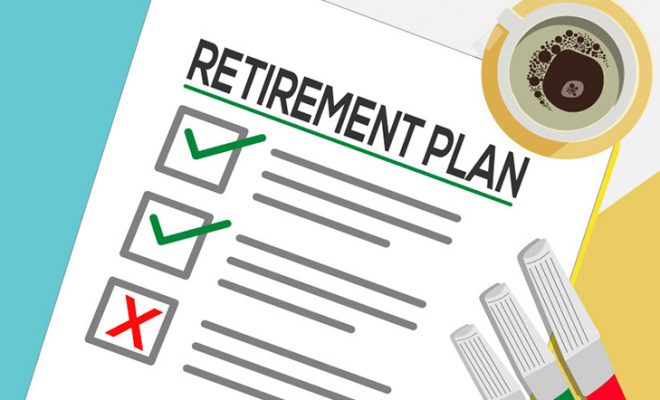Should Your Portfolio Become More Conservative as You Approach Retirement?
Ideally, your portfolio grows with you. How you invest depends a lot on your age, and hence, your portfolio eventually shapes and looks different according to your life stage. Conventional wisdom suggests making your portfolio more conservative as you get older and approach retirement. It may be advisable to rebalance your asset allocation, lower the proportion of high-risk stocks, and replace them with safer bonds, as you get older. This way, your portfolio can accommodate safer investments and focus on capital preservation rather than growth.
Since determining the right portfolio balance at each age can be a bit tricky, here is a comprehensive guide on suitable investments for each age group:
Table of Contents
In your 20s
In this stage, most people have recently graduated with no other financial responsibilities but a student loan to pay off. It may be hard to set aside a large chunk of money for investment purposes in your 20s. However, you can always begin with small savings. Your ideal investments for this age can include:
- A 401(k) account:This is an employer-sponsored retirement savings account that allows you to contribute up to $19,500 as of 2020 and 2021 in pre-tax dollars. Additionally, in some cases, your employer can also match the contribution limit of a 401(k), making the plan more attractive.
- An Individual Retirement Account (IRA): An IRA is a tax-advantaged account that allows tax-free growth of funds. You can also enjoy tax-free withdrawals subject to some conditions. The yearly contribution cap for 2020 and 2021 is $6,000.
The recommended asset allocation can be 80-90% in stocks and 10-20% in bonds because you have more time to absorb the fluctuations of the market. Compound growth is a great advantage of investing at this age. What you invest in your 20s has the highest potential for growth in the long-term when you are close to retirement.
In your 30s
When you are in your 30s, you are likely to have more than 30 years for your funds to grow before you retire. You have more time to recoup from losses and handle stock market volatility. Your ideal investments for this age can be:
- A 401(k) or 403(b) plan: You can begin or continue to invest in an employer-sponsored program like a 401(k), 403(b), etc. However, in your 30s, it may be good to contribute at least 20% of your total salary towards retirement savings.
- A Roth IRA: If you do not want to invest in a traditional IRA, you can comfortably choose the tax-advantaged Roth IRA for retirement. If you qualify for the income eligibility, you can contribute up to $6,000 in after-tax dollars. A Roth IRA is more advantageous than a traditional one. A Roth IRA allows you to pay taxes in the present and get tax-free withdrawals later, subject to some conditions. Moreover, your money also grows tax-free until withdrawn.
- More stocks and fewer bonds: The sample allocation for your portfolio in your 30s can be70-80% in stocks and 20-30% in bonds. You can still bear high risk, but it can help to add some bonds to your asset mix for future security. The aim can be to stay invested in stocks for the long-term and not be impacted by short-term volatility. As per historical evidence, from 1928-2016, the average annual return on the S&P 500 Index was 9.52%. This is significantly higher as compared to the 10-year Treasury bill return of 4.91% per annum. That said, alternatively, you can also opt for target-date mutual funds. These funds invest more aggressively when you are younger and automatically rebalance your portfolio to make it more conservative as you move closer to retirement.
- Real estate: This is a perfect time to invest in real estate if you think you can hold it at least for five years. Alternatively, you can invest in a Real Estate Investment Trust (REIT) that allows you to invest indirectly in a property and get high earnings.
In your 40s
In your 40s, you are close to retirement, and your focus is likely to be on ensuring that you and your family can sustain your lifestyle during your retired years. Your ideal investments for this age can be:
- A 401(k) or 403(b) plan: You can max out your $19,500 annual contribution limit each year in your 40s. If you begin investing now at the maximum limit, you will have $1 million in your account by the time you are 64 (at 6% interest per annum). And even though this might not be the perfect retirement figure, it is a good start. That said, if you have been consistently investing in your 20s and 30s, you can still continue to max out your 401(k) contributions.
- A Roth IRA: For a Roth IRA, you can make the most of$6,000 in after-tax dollars contribution.
- Balance stocks and fewer bonds: In your 40s,your asset allocation can include more lower-risk bonds and fixed investments. The ideal asset allocation in this age group can be 60-70% for stocks and 30-40% for bonds. You can also consider including diversified international stock funds or low-fee index funds in your portfolio.
- Real estate: It may be advisable to hold investments in REITs at this age as REITs are stronger and secure assets for the long-term.
In your 50s and 60s
This is the closest period to your retirement. So, it can be beneficial to focus more on capital preservation and not so much on growth. Understand your current and desired future lifestyle, determine your present and expected retirement income, and gauge the possible tax situation. The analysis of these parameters can provide clarity on the investment choices for your 50s and 60s.
- Be careful with retirement savings: You must keep contributing to your employer-sponsored programs andtake advantage of the catch-up If you are 50 or older, you can make catch-up contributions in a 401(k) account up to $6,500 and up to $7,000 in an IRA, for both 2020 and 2021. Also, try not to withdraw your funds before the age of 59.5. If you take out money from a 401(k) or an IRA before this age, you will incur a 10% penalty, along with applicable taxes. Hence, aim to take qualified or required distributions from these accounts only. Distributions taken after the age of 59.5 or under specific circumstances like permanent disability, loss of employment, etc., are called qualified distributions. These are penalty-free drawings, and you only pay income tax on your pre-tax contributions. However, in a Roth IRA, you can make tax-free withdrawals at any age after holding your account for five years.
- Be wise with Social Security Benefits: Legally, Social Security benefits can be withdrawn from the age of 62. But keeping money in this account for longer can enhance returns. For example, if you take Social Security benefits at the age of 68 (one year later than the official retirement age), your returns will be equivalent to 108% of the monthly benefit. You can add more than 50% to the cheque if your withdrawals are delayed until the age of 70.
- Be more conservative: In this age group, it helps to have a more conservative portfolio. Stocks can constitute 40-50% of your assets, and bonds, cash, and other liquid equivalents can include the rest.
To sum it up
Restructuring your portfolio to adapt to each age can prove to be an efficient investment strategy for retirement. If you need help with portfolio rebalancing, you can consult professional financial advisors to ensure that you are financially prepared for retirement.



















